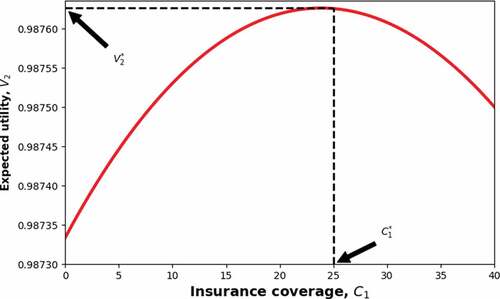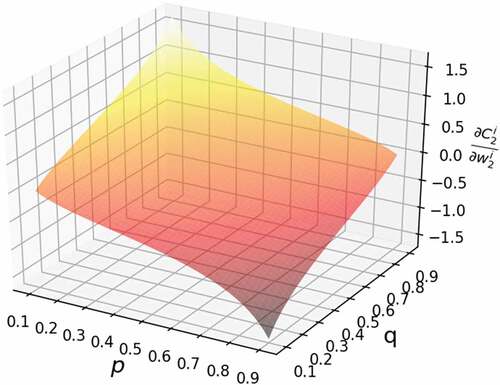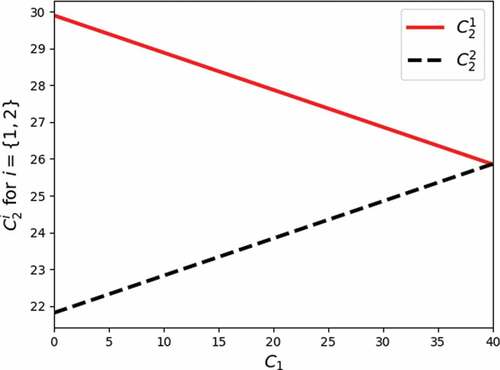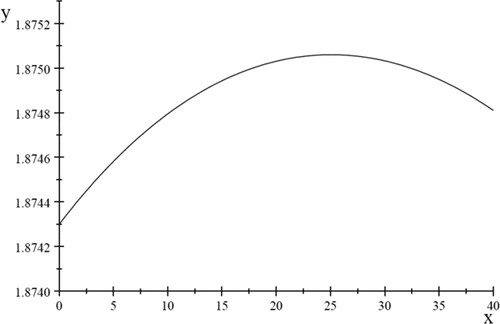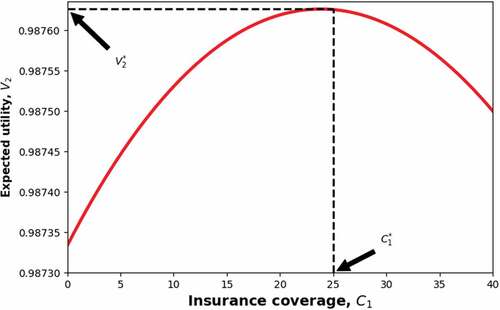Figures & data
Figure 1. Insured losses since 1970 (USD billion in 2021 prices). Source: .swiss Re Institute (Citation2021)
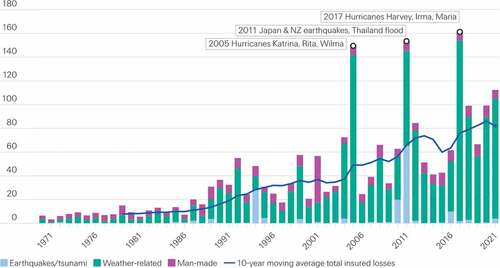
Table 1. Nominal values of the parameter
Figure 4. Optimal insurance coverage with intertemporal consideration. The optimal value is at , at which point the greatest expected utility is valued at
. (The interval of
over which the plotting is done was subdivided
times to ensure that an accurate value of the index of
is used to obtain the maximum value of
).
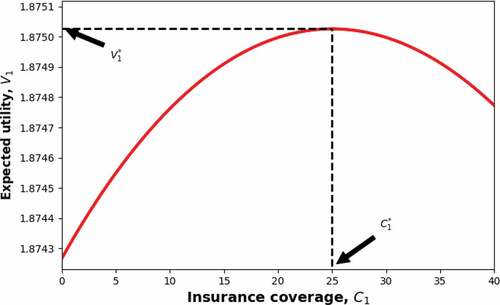
Figure 5. Optimal insurance coverage with intertemporal consideration. The optimal value is at , at which point the greatest expected utility is valued at
.
